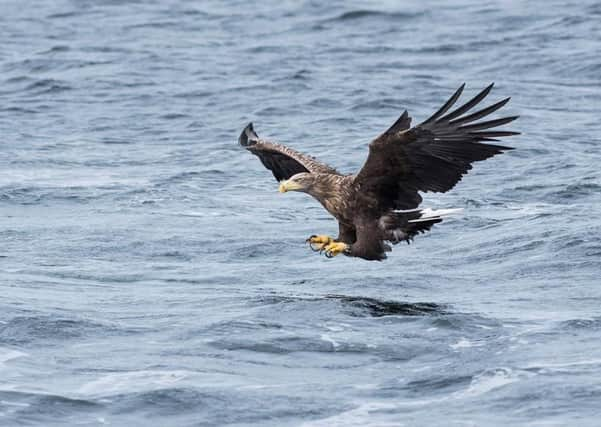Two white-tailed eagles – the UK’s largest bird of prey – spotted by RSPB Bempton Cliffs volunteers


Volunteers on the nature reserve’s viewing platforms were amazed to see not one but two white-tailed eagles, the UK’s largest birds of prey, soaring over the sea.
These giants of the sky have a massive wingspan of around 2.4metres (approximately eight feet) – the same size at the height of football goal crossbar from the ground and are widely known to birdwatchers as the ‘flying barn-door’ of the bird world.
Advertisement
Hide AdAdvertisement
Hide AdThey feed mainly on fish, so they are also known as sea eagles.
Volunteer Linda MacKenzie witnessed the fly past in late March.
She said: “I couldn’t quite believe it. It was so exciting to see these two majestic birds but trying to keep track of both was tricky.
“I didn’t catch sight of the black-browed albatross that visited the cliffs last year, however this was almost as good.”
Advertisement
Hide AdAdvertisement
Hide AdOnce widespread across our isles, white-tailed eagles were wiped out in the early 20th Century due to illegal killing.
The last British bird was shot in Shetland in 1918.
The RSPB became involved in a long-term plan to re-introduce the species in Scotland in the mid 1970s and initially a number of young Norwegian birds were released on Rum, in the Inner Hebrides.
Over the years, further releases took place and there are now thought to be around 40 pairs north of the border.
However, the species remains on the endangered Red List as it is slow to breed.